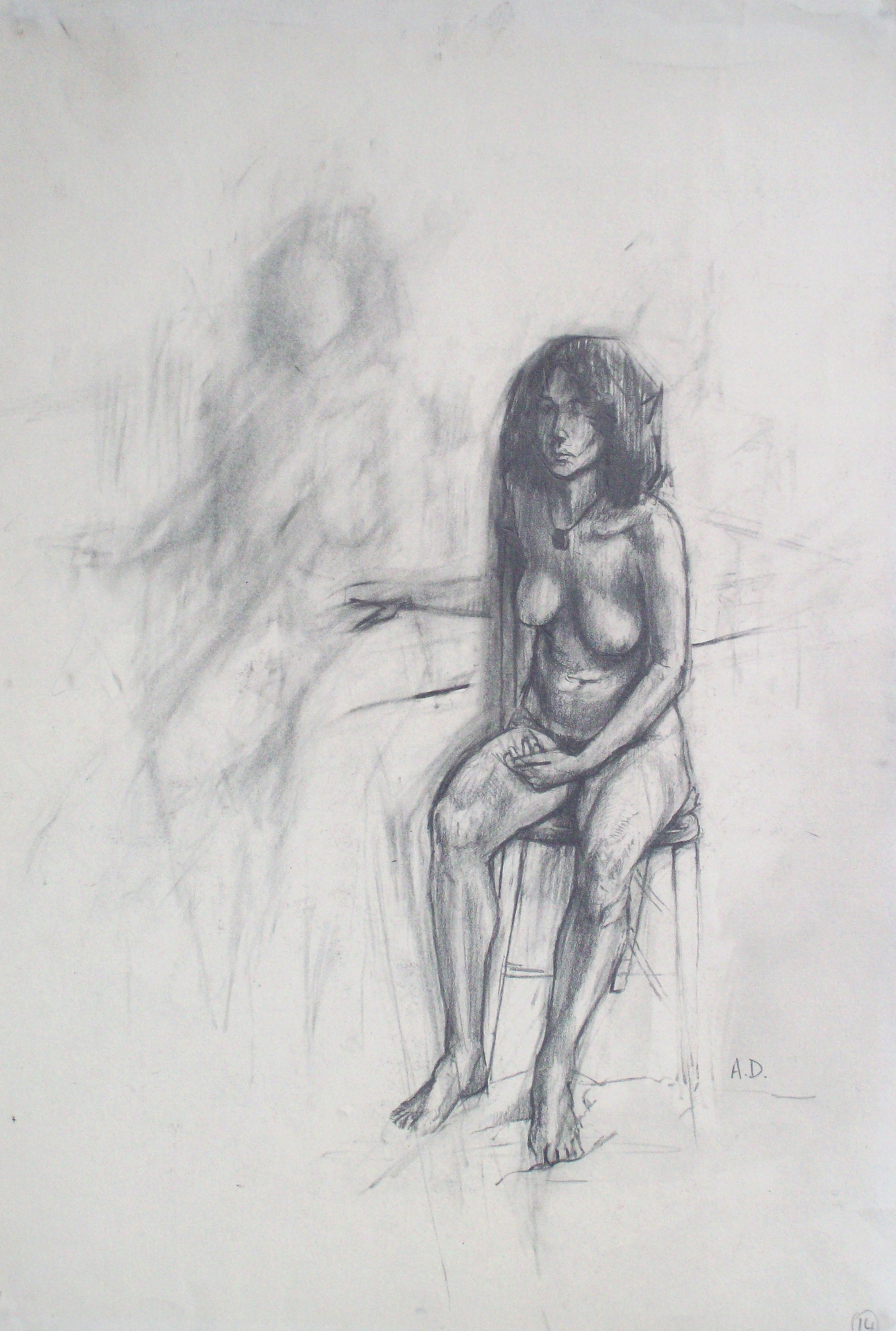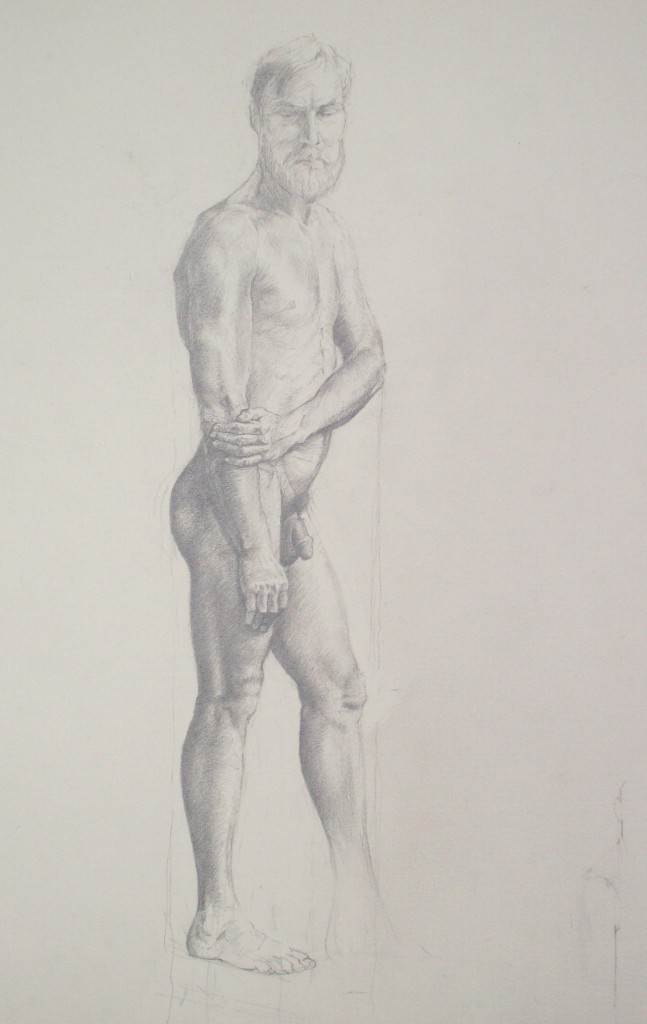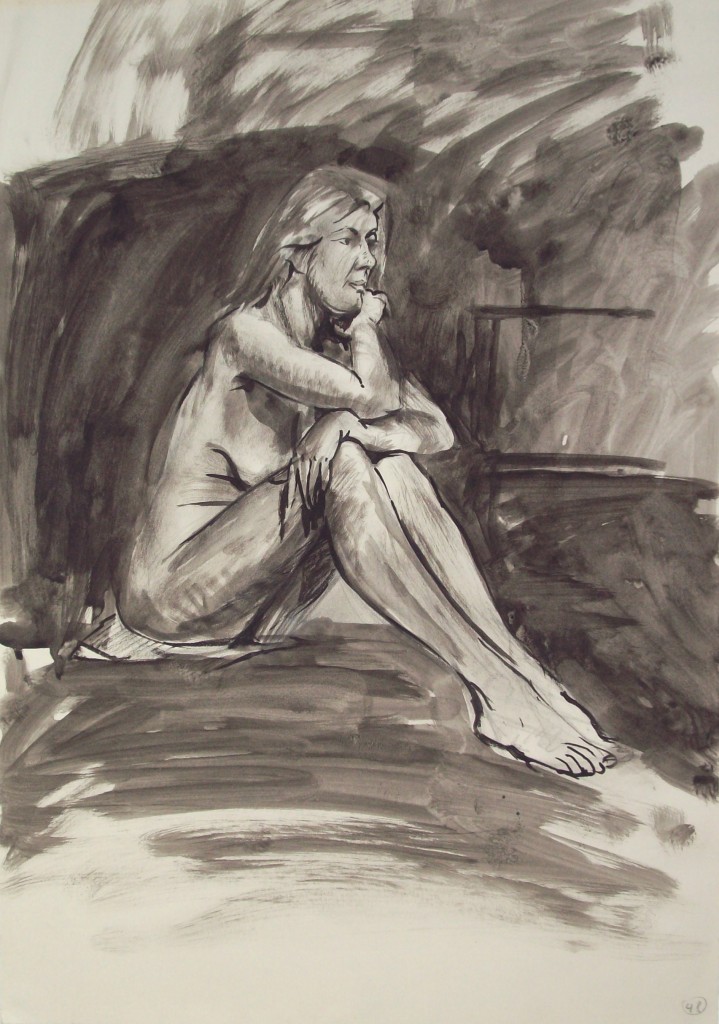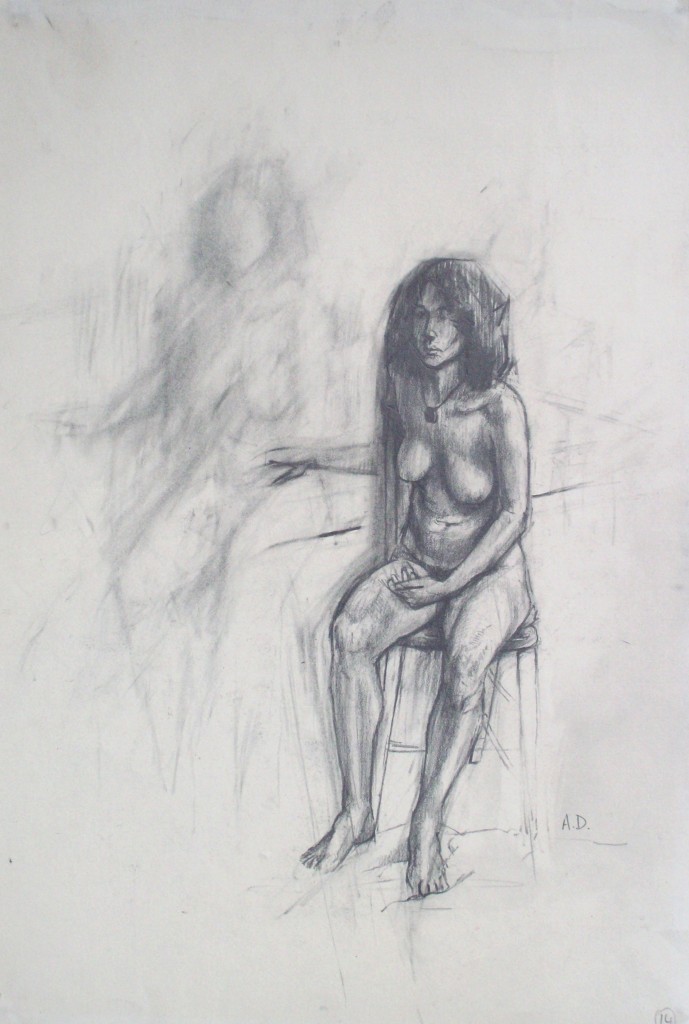Peter Greenham RA insisted all first year students at the Royal Academy Schools should work in the Life Drawing Room (Life School), drawing directly from the nude. Anachronistic, bourgeois, sexist – call it what you will, peculiar to Western academic tradition this simple practice has a cultural significance, which like so many of our defining traditions, should be considered before disposing of. Today Tracy Emin, is instructing students as to how they should go about the activity, though to what effect remains to be seen. In the past males tended to dominate teaching in the life-school; I can recall the sighs of Hilary Devereux, Helen McCarville, Lynn Bates, Helen Elwes, Peggy Gryffyd et al when they were faced with yet another day at the drawing board, perusing the sinuous curves of the female form. However, to be fair – we had as many male models as females. There were women on the teaching staff at the schools though it seemed the likes of Margaret Green, Olwyn Bowey and company didn’t venture into the life room. One big question dry old academicians never seemed to address or answer was Why? Because it’s good for you – obviously!
The drawing above was done about mid-way through the first year. Norman Blamey RA, Professor of Drawing at the Schools came and tinkered with my perceptions – the evidence of which can be seen at the bottom right of the sheet. This drawing shows my efforts to conform to an academic ideal.There are good things in it – detailed observation and pencil-person-ship, but it could be more alive. How then? to establish a healthy disposition towards drawing might be part of Ms Emin’s remit today, assuming she knows. Greenham and his posse exuded an air of state sponsored authority. Expressing yourself in relation to that, without sycophantic grovelling or a completely passive attitude was what seemed necessary. After all, some did set up shop immediately outside the Keeper’s Office.
I made the above image after becoming saturated with the ethos of the life room. I’d had enough of trying to make perfect, accurate, ‘correct’ drawings for the old savants and whiffling school-masters who trod the boards there and was tired of my efforts to conform. I deliberately made an ugly drawing even though our model for the week was an attractive blonde from Kensington. I was recalling the coarse, lumpy imagery of Picasso and revelled in my slack attitude. I don’t like this drawing but it matters because I had the temerity (or cheek) to dispense with ‘the ideal’, as the antique Victorian clock on the wall demarcated the passing of our lives together with Greenham stood by.
Drawing is very simple and like all such things, it takes great skill to do it well. There is nowhere to hide, it’s just you, the pencil, the model and a sheet of paper. Watching the classical pianist Jan Rautio reminded me – Art shouldn’t require wrapping with intellectual codswallop, a great performance will suffice. The recent nomination of David Shrigley for the 2013 Turner Prize and the drivel used to justify it, is a perfect example of how the media impoverish public perception. We were told that ‘Shrigley matters because he introduces a refreshing change in terms of humour’ – Lawks-a-mercy ! Artists have never been humorous before, have they? The quality of Shrigley’s drawings isn’t remarkable. Raw, some might say, not concerned with verisimilitude or academic prudence – one dimensional? inspired by Beavis & Butt-head? Hmm.
The final drawing I want to show is from the second year at the schools, when dipping in to the life room re-connected me with the edifying, wholesome and sculptural processes of formal life drawing. I made this study quite naturally and was pleased to have it lauded as ‘of some merit’ by Anthony Eyton.
The drawing shows good awareness of form, sensitivity to the model – strong perceptions about her vulnerability. The pencil marks are chiselled, energetic and persistent. The sense of scale is good. I like the way the previous study (erased) is dispensed with and I have shaken off my torpor to get to grips with the task in hand. A year of drawing from the nude had worn away my misconceptions about the process. Much like scenes from ‘The Karate Kid’ where Jackie Chan oversees the deconstruction of his student’s attitude and replaces it with a new purpose. There was a ‘Bhuddist’ veneer of discipline to the Life School at the Royal Academy. Where the institution could have done better in serving the purposes of Art education, was in relating the drawing process to painting. For example, instead of spending such a tranche of time drawing – it might have been possible (with sufficient use of space) to have combined life painting with life drawing – simultaneously. That way students would have been able to observe how the two activities work alongside each other. The mind set for painting being very different at times to the one we use for drawing.
The foregoing are examples of a British Figurative artists work in the European Academic tradition. They show the development of aesthetic awareness through the process of observational drawing.




3 Comments
3 Pingbacks